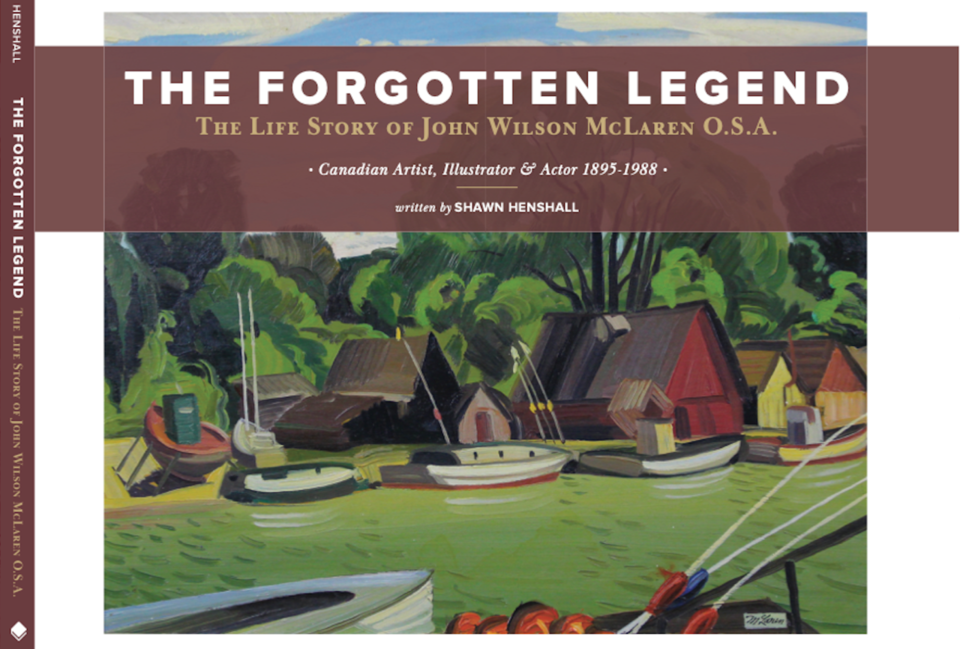Almost exactly 17 years ago, Shawn Henshall walked into a friend’s Guelph home and was immediately entranced by the art on the wall.
While the paintings shared a passing resemblance to work by the Group of Seven, they also had a “distinctive, identifiable style of their own,” he wrote.
That friend wound up becoming his wife—and those paintings, created by her great grandfather, J. W. “Jack” McLaren, sent him on a quest for nearly 12 years.
“If you look at all of the artists that made a name for themselves in Canada, they heavily promoted themselves,” says Henshall, who has been based in Squamish for the last four years. “I don’t mean that in a negative way. Sometimes you have to do that to survive … But Jack McLaren refused to promote himself. He thought it was a negative thing to promote yourself.”
But because of that, the impact of his art, comedy, and illustrations is largely uncelebrated in Canada, despite their widespread reverberations.
Henshall recently marked the publication of his book, The Forgotten Legend: The Life Story of John Wilson McLaren O.S.A. (via Friesen Press), documenting those accomplishments and showcasing his work.
“It’s not quite a coffee-table book,” he says. “It is, in a way, but it’s a biography as well. I pictured a glossy-style book because it’s art and you want to show the art.”
It’s hard to condense all of McLaren’s accomplishments (backed up by hard-earned facts that Henshall gleaned from various libraries, archives, and galleries over the years), but the book starts with his time as a soldier on the frontlines of the First World War, where McLaren helped form the Princess Patricia’s Canadian Light Infantry Comedy Company, which entertained troops with comedy skits during the war—even performing for the King and Queen of England in London.
That later led to The Dumbells, a comedy troupe that toured Canada after the war and even made a Broadway debut in 1921.
“It was like uncovering a mystery,” Henshall says of the research process. “I’m standing here in my office looking at a shelf that is four-and-a-half-feet long, and on it, every book has a mention or something to do with Jack McLaren. I ordered books thinking I could find some juicy info and, in some of them, there was nothing. But others I got an angle. The detective work was fun.”
McLaren’s contributions to the art world, meanwhile, were deep and varied. He worked as a graphic artist for various firms in Toronto—pioneering the use of plasticine in advertising—and, eventually, was invited to join the city’s famed Arts and Letters Club. It was there he reconnected with some of the members of the Group of Seven.
Later, he was welcomed into the Ontario Society of Artists, the country’s longest-running art society. He also delved into engraving linoleum, creating caricatures that gained him acclaim, and caught the eye of famous portrait photographer Yousuf Karsh.
“I absolutely loved discovering the relationship with Yousuf Karsh,” Henshall adds. “It was a two-way relationship.”
Karsh photographed McLaren, and also collected his linocuts.
McLaren contributed graphic art to publications like Esquire (there’s an interesting backstory involving Ernest Hemingway there, Henshall says), Chatelaine, and Maclean’s Magazine.
While McLaren’s family knew some of his backstory, it was far from complete. (McLaren died in Goderich, Ont. in 1988.)
“It was a huge deal [to his family],” Henshall says of the book. “There were his diaries, written in foolscap in pencil, stuffed in a filing cabinet, but no one had seen them.”
Since the book was published during the height of the pandemic, Henshall has given several talks on it, including to the Arts and Letters Club and on C小蓝视频 radio.
“I think the good news is he didn’t feel the need to be celebrated,” Henshall says.
The Forgotten Legend is available at Armchair Books in Whistler and the Little Bookshop in Squamish. Find more info at.




